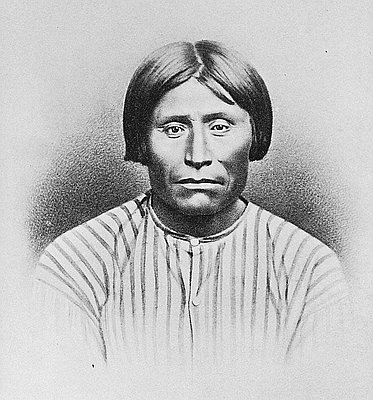“They rise from the water or fall from the air with balletic grace,” wrote Barry Lopez of the white geese that visit Tule Lake each November in “one of the most imposing—and dependable—wildlife spectacles in the world.” Snow geese are only one of many kinds of wildfowl that crease the skies of the Klamath Basin. About a thousand wintering bald eagles arrive every year from Alaska and Montana, congregating in greater numbers here than anywhere else. There are ducks of many varieties: mallards, northern shovelers, redhead, and canvasback. Kestrels, blackbirds, marsh hawks, barn owls, tundra swans, Savannah sparrows, and tree swallows, all wing their way to these lakes and marshlands in great numbers. And there are many more to catch the eye: 260 bird species in all. In 1956 a United States Fish and Wildlife report said that in the Klamath Basin one found “the greatest concentration of waterfowl in North America and probably the world.” That year an estimated 7 million birds appeared within and above the region’s six National Wildlife Refuges.
In the decades since, those numbers have dropped closer to 1 million. Even though this region remains, as Barry Lopez said, “one of the richest habitats for migratory wildfowl in North America,” in times of water scarcity, fish and farms have priority in their claims for water over visiting birds. Of the 360,000 acres of wetlands once found in the Klamath Basin, 142,000 remain, and three quarters of these acres, even within the wildlife refuges, are farmed.
Some of the crops are cereal grains that wildfowl consume. But agricultural practices on and near the refuges do not protect them from pesticide pollution. Rachel Carson noted that in 1960 “the refuge staff picked up hundreds of dead and dying birds at Tule Lake and Lower Klamath.” She feared that the poisoning of refuge waters could lead to a “silent spring” at this crucial place for wildfowl in the Western Hemisphere, where mountains have formed “the narrow neck of a funnel, into which all the migratory paths composing what is known as the Pacific Flyway converge.”
Although Oregon is known for its rainfall, one quarter of the state’s territory is desert: land upon which less than ten inches of rain falls annually. According to Bill Gulick’s Roadside History of Oregon, the high desert country of eastern Oregon “looks much the same as it did when humans first saw it.” But archaeological discoveries include 9,000-year-old sagebrush sandals buried by the lava of Mt. Mazama. It is possible that descendants of the sandals’ wearers witnessed the volcano’s cataclysmic eruption two millennia later.
There is also archaeological evidence that thousands of years ago, hunters in the highlands used fire to alter their environment. This practice extended into the nineteenth century. Peter Skene Ogden, traveling in the Harney Basin in the 1820s, reported, “all the Country appears lately to be overrun by fire.” This disappointed the trapper, who ventured “to assert without exaggeration the Natives have distroyed [sic] and principally by fire upwards of sixty thousand Beavers.” Clearly, the high country has changed a great deal since people first arrived. Natural events and human actions have transformed it.
Humans were not the only species to settle here in the wake of the Ice Age. As the glaciers shrank, conifers colonized the land. In the following millennia, while global temperatures continued to rise, the large inland lakes of the Pleistocene era vanished, leaving smaller bodies of water in their wake. Grasses became dominant throughout the Great Basin, with free-form junipers spreading out among the sagebrush, rabbit brush, and saltbush. Ever since, when winter frosts thaw, an astonishing bouquet of primroses, buttercups, Indian paintbrush, phlox, and coral mallow greets the eye. And today, as long ago, on land once crushed beneath the tread of giant mammals—the mastodon and woolly mammoth, their extinction almost surely hastened by ancient hunters—lizards, rattlesnakes, deer, and that wily survivor, coyote, make their way.
A link in the chain of fire that stretches around the Pacific Rim, the volcanoes within the Cascade Range extend more than 600 miles between California and British Columbia, beginning with Mount Lassen in the south.
For mountains, the Cascade volcanoes are juvenile, having risen within the last million years. The neighboring mountains are also newcomers, geologically speaking. Made of every type of rock—sedimentary, igneous, and metamorphic—they are roughly 25 million years old.
The name of the Cascade Range comes from the numerous waterfalls and white-water rapids within the Columbia River Gorge; turbulent waters that ceased to exist in 1938 when the Bonneville Dam tamed that stretch of the Columbia. The river is flanked there by Mount Hood in Oregon and Mount St. Helens on the Washington side. During their downriver journey, Lewis and Clark described the surrounding mountains as “high, rugged, and thickly covered with timber, chiefly of the pine species.”
The association between this mountain range and water is fitting: the Cascades are the source of the waters of the Klamath Basin. They are also the creators of a desert, as they form a wall across Oregon that blocks rainfall coming in from the Pacific. The country to the east has less than ten inches of precipitation all year.
Although Mount Lassen erupted in 1915 and Mount St. Helens blew its top in 1980, the volcanoes of the Klamath Basin are not expected to coat that region with a fresh layer of lava any time soon. But reminders of volcanic violence are all around. Rugged lava beds and two smooth glass mountains made of obsidian express their blackness beneath the glacial snows of Mount Shasta. And Crater Lake, that jewel within a volcanic cone northwest of Upper Klamath Lake, bears witness to the spectacular cataclysm that occurred almost 7,000 years ago when Mount Mazama hurled pumice across the entire Pacific Northwest.
© Stephen Most, 2003. Updated by OHP staff, 2014.








